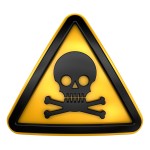 Our nation has been overwhelmed by an ongoing epidemic of prescription painkiller addiction. A deadly epidemic that is said to be more widespread than cocaine or heroin, and that has affected nearly 2 million Americans, according to federal statistics. And although initially the FDA reported the risks of Opioid addiction to be small, statistics are proving that the thought is clearly a misconception.
Our nation has been overwhelmed by an ongoing epidemic of prescription painkiller addiction. A deadly epidemic that is said to be more widespread than cocaine or heroin, and that has affected nearly 2 million Americans, according to federal statistics. And although initially the FDA reported the risks of Opioid addiction to be small, statistics are proving that the thought is clearly a misconception.
Opioids are a class of powerful drugs, often used for pain, which includes morphine, heroin and brand names such as OxyContin, Vicodin and Percocet.
“It turns out that the doctors didn’t know what they were talking about,” said Barbara Howard, whose daughter, a home-care nurse, died of an overdose in 2009 in southeast Ohio, an area devastated by the epidemic. She had developed a habit after knee surgery.
How Did Painkiller Addiction Get To This Point?
According to an article by The Washington Post, a closer look at the opioid painkiller epidemic shows that retail prescriptions have roughly tripled in the past 20 years, and that the rising sales and addictions were catalyzed by a massive effort by pharmaceutical companies to shape medical opinion and practice.
For years, doctors had been cautious about prescribing opioids to anyone except patients with cancer or in acute pain.
But drug manufacturers and some pain specialists helped create a body of scientific research refuting the long-standing worries about opioids and pushed to expand the use of the drugs in people with chronic pain: bad backs, arthritis, sore knees.
Painkiller Addiction Reports
Their studies reported minimal risks of painkiller addiction and dependence, which in turn were accepted by the FDA and the nation’s medical journals. State medical boards made their rules for prescribing opioids more liberal. Academic and industry articles dismissed the old fears as “opiophobia.”
These reports reached doctors through marketing efforts and told them that there were few risks in using opioids to treat chronic pain.
According to a Washington Post examination of key scientific papers, a court document and FDA records, many of those claims were developed in studies supported by Purdue Pharma, the maker of OxyContin, or other drug manufacturers. In addition, the conclusions they reached were sometimes unsupported by the data, and when the FDA was struggling to come up with an opioid policy in 2012, it turned to a panel populated by doctors who had financial relationships with Purdue and other drugmakers.
In few places are the effects of the opioid epidemic clearer than in Portsmouth, a town on the Ohio River near Ohio’s borders with West Virginia and Kentucky. About 10 percent of babies here are born addicted to opioids. At one point, nine “pill mills” operated out of this region of 80,000 people. About 20 people a year die of drug overdoses. And last year, for every resident, more than 100 doses of opioids were prescribed and dispensed.
Ask someone here whether the risks of opioid addiction are minimal, and some snort or roll their eyes.
“Around here, we call it ‘pharmageddon,’ ” said Lisa Roberts, the public health nurse for the town, whose primary job is to reduce the fatalities associated with drug use. “This has been absolutely devastating to Appalachia. From what we’ve seen, the risks of addiction were tremendous.”
Early on in the use of the drug, officials at the Drug Enforcement Administration perceived the danger to patients.
“The company’s aggressive methods, calculated fueling of demand and the grasp for major market share very much exacerbated OxyContin’s widespread abuse and diversion,” a November 2003 memo from the agency said. “The claim in Purdue’s ‘educational’ video for physicians that opioid analgesics cause addiction in less than one percent of patients is not only unsubstantiated but also dangerous because it misleads prescribers.”
As of current the FDA, along with the US Governement, have realized this is an epidemic, and they are considering different measures to ensure that the American’s who need the painkillers receive them, but they don’t fall into the hands of those who don’t.
